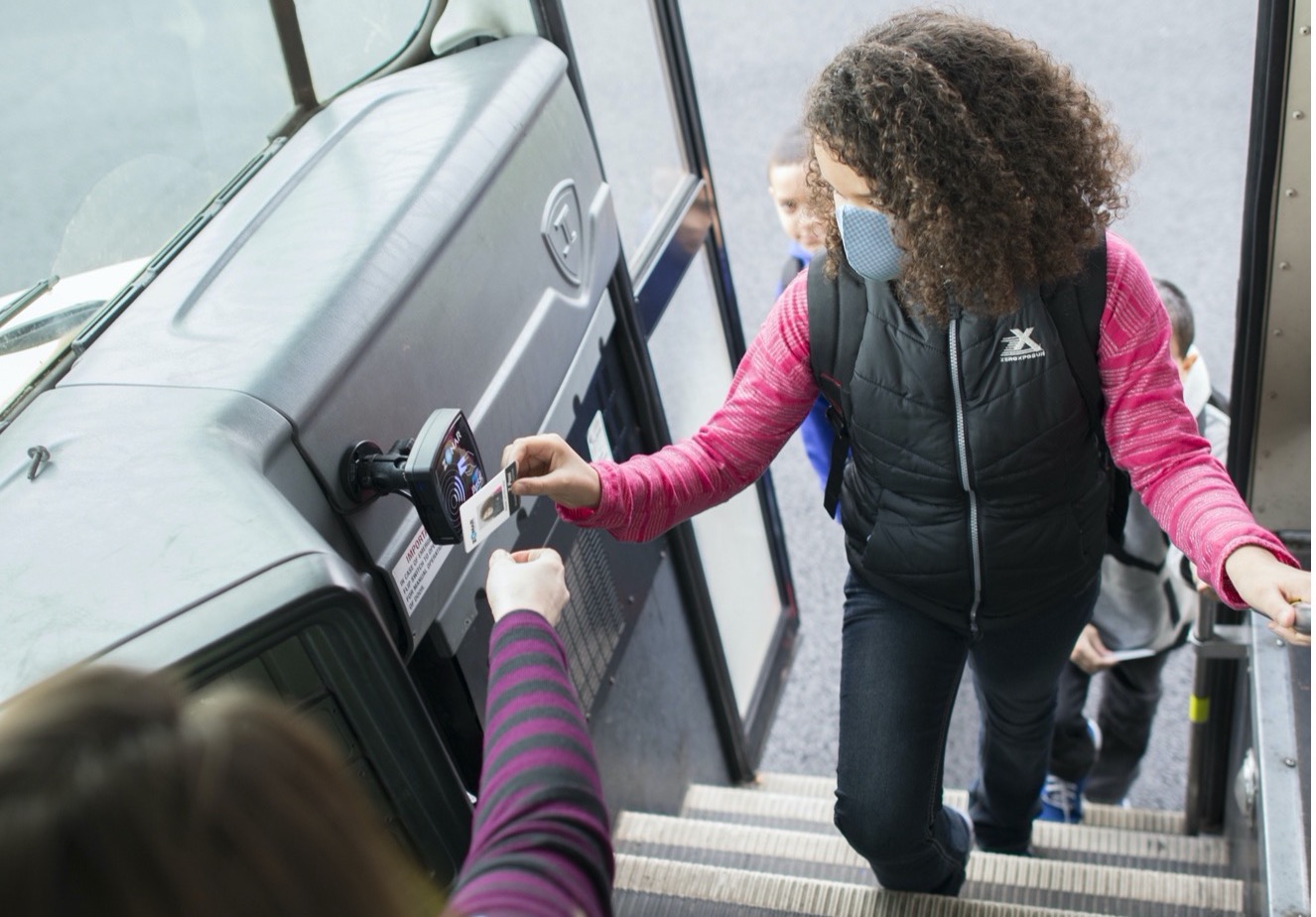Contact tracing on the bus is still incredibly important
Contact tracing is a public health and safety practice of tracking a pathogen as it spreads from person to person. By implementing effective strategies, you can quickly identify and notify people if they have been exposed to someone who tests positive for a contagious disease such as COVID-19.
With variants like Omicron and others still wreaking havoc, the sooner people know about it, the sooner they can take action to prevent a larger outbreak.
How it works:
- Someone tests positive for COVID-19.
- You identify who they came into close contact with.
- You then inform these people that they have been exposed to the virus.
- They, in turn, are notifying people they have since come into contact with so everyone can work to stop the spread.
Many current contact tracing protocols include the use of modern technologies to securely capture basic information without disrupting daily life or violating privacy.
Why is contact tracing important to keep schools open safely?
With most schools open, classes are placing students, teachers, staff, administrators, guards and school bus drivers in close quarters, even with social and physical distancing measures strictly in place. Additionally, primary school students in the early grades may not understand – or be able to consistently follow – the new rules, increasing their risk.
If even a single person tests positive for the virus, school officials should quickly identify and notify staff and parents whose children have been exposed. An efficient and effective contact tracing protocol improves the ability of administrators to avoid an outbreak that could disrupt school operations.
Where and when does contact tracing for a school begin?
The moment a student gets on the school bus. Each vehicle is an enclosed space shared by a group of students, plus the driver. If someone tests positive for COVID-19, school officials should notify the right parents and the driver.
Contactless traffic visibility technology that digitally captures the date, time and location where passengers get on and off the bus tells administrators who to notify.
How can K-12 schools implement contact tracing?
K-12 schools can install contactless student visibility technology that is typically used on school buses for classrooms, buildings and facilities. Each student and school employee receives a passive, self-managed RFID card that they present to a contactless scanning device when entering and exiting. This device records the date and time when the person enters and leaves the room or building.
Put on the contactless ID scanner:
- In school buses, if not already installed
- Outside of classrooms to identify who attended, who taught, and anyone who entered
- Exterior buildings, libraries, cafeterias and other common areas
Can universities and colleges do the same?
Yes, and it’s just as important to do so. Higher education institutions accommodate faculty, staff, contractors, and adult students who travel more independently than non-university students. Schedules are varied, locations are spread across campus, and many depend on on-site transportation. The same contactless traffic visibility technology supports contact tracing across all locations, even across multiple campuses.
Put on the contactless ID scanner:
- In shuttles and student buses
- Outside of classrooms, lecture halls, auditoriums, libraries and science labs
- Outdoor buildings, dormitories, campus offices, cafeterias and other common areas
Col Zonar Z™ Supports contact tracing for K-12 schools, universities, and colleges
Col Zonar Z™ is a contactless visibility solution for student traffic. Each student and employee receives a passive, self-managed RFID card, which they present to the Z Pass contactless scanner when getting on and off the bus or entering a particular space. No contact required.
As soon as an RFID card is scanned, Z Pass records the date, time and location of this scan and uploads this data to our secure online portal, Ground Traffic Control®. If someone at school tests positive for COVID-19, administrators can access secure data online to determine who was in the same room, area, bus or shuttle with that person.
Confidentiality is important. Z Pass only records the date, time and place where the card was scanned and the name of the person to whom this card was issued. This master data is uploaded to Ground Traffic Control for authorized viewing only. Z Pass does not capture or store any additional information. And Z Pass never shares information.
What if contact tracing technology is not in our budget?
If you have budget concerns, ask about professional grant writing assistance. Check out the federal, state, and local options available. Times are tough, but we care about the health and safety of your students and staff. With nearly 20 years of industry experience, we’ve proven that we’ll put you first. Let’s work together to see what can be done.
Learn more and download the Z Pass product brochure.


Comments are closed.